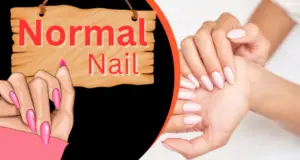Introduction – When Nails Get Curvy: Nail Clubbing Demystified
Nail clubbing, characterized by the curvature and rounding of the nails at the fingertips, is a condition that can be indicative of underlying health concerns. While nail clubbing itself may not be a cause for immediate alarm, recognizing its presence and understanding its potential causes and associated symptoms is crucial for early detection and prompt medical attention. In this comprehensive guide, we will demystify nail clubbing, exploring its symptoms, possible causes, and emphasizing the importance of early detection for overall health.
Understanding Nail Clubbing
Nail clubbing, also known as digital clubbing, is characterized by specific changes in the nails and the surrounding tissues. The main features of nail clubbing include:
- Nail Curvature: The nails become rounded and curve downward, resembling the shape of an upside-down spoon.
- Nail Bed Softening: The soft tissues beneath the nails (nail beds) appear swollen and spongy.
- Loss of Angle: The angle between the base of the nail and the cuticle, known as the Lovibond angle, becomes greater than 180 degrees.
Symptoms and Potential Health Concerns
Nail clubbing is often associated with underlying health conditions. While it can occur in isolation ,it is Important to be aware of potential symptoms and seek medical evaluation if you experience any of the following:
- Respiratory Conditions:
- Shortness of breath
- Chronic cough
- Recurring lung infections
- Cardiovascular Disorders:
- Chest pain or discomfort
- Irregular heartbeat
- Swelling in the legs or ankles
- Gastrointestinal Conditions:
- Abdominal pain or discomfort
- Changes in bowel habits
- Unexplained weight loss
- Liver and Kidney Diseases:
- Jaundice (yellowing of the skin and eyes)
- Fatigue and weakness
- Fluid retention
Causes and Importance of Early Detection
Nail clubbing can be caused by various underlying conditions, including:
- Respiratory Diseases:
- Chronic obstructive pulmonary disease (COPD)
- Lung cancer
- Bronchiectasis
- Cardiovascular Disorders:
- Congenital heart disease
- Infective endocarditis
- Cyanotic heart disease
- Gastrointestinal and Liver Conditions:
- Inflammatory bowel disease (IBD)
- Cirrhosis
- Hepatopulmonary syndrome
Early detection of nail clubbing is crucial as it can serve as a warning sign for potentially serious health conditions. Prompt evaluation and diagnosis by a healthcare professional can lead to early intervention and appropriate treatment, improving outcomes and quality of life.

Ques. What is nail clubbing?
Ans. Nail clubbing is a condition characterized by the curvature and Rounding of the nails at the Fingertips. The Nails become Curved Downward and Resemble the Shape of an upside-down spoon .
Ques. What causes nail clubbing?
Ans. Nail Clubbing can be caused by Various Underlying Health conditions ,including respiratory diseases ( such as chronic Obstructive Pulmonary Disease & lung cancer ) ,cardiovascular disorders, gastrointestinal & liver conditions ,and other Systemic diseases.
Ques. Are there any symptoms associated with nail clubbing?
Ans. Nail Clubbing itself may not Cause Symptoms, but it can be Associated with Other signs that vary depending on the underlying condition. These may include shortness of breath Chronic cough ,chest pain ,Abdominal Discomfort ,swelling in the Legs or Ankles ,jaundice ,fatigue, and weight loss.
Ques. Should I be Concerned if I have nail clubbing?
Ans. Nail clubbing itself is not a Diagnosis but may indicate an Underlying health issue. If you have nail clubbing or notice any Associated symptoms, it is Advisable to Consult a healthcare Professional for a Proper Evaluation & diagnosis.
Ques. Can nail clubbing be reversed?
Ans. Nail clubbing is typically a sign of an underlying Condition ,and the treatment Depends on identifying and managing that specific Condition. Treating the underlying cause may help alleviate the nail clubbing over time.
Ques. Is nail clubbing a serious condition?
Ans. Nail clubbing can be a sign of potentially serious health conditions. Early detection and intervention are essential for managing these underlying conditions effectively. Prompt Medical evaluation is Recommended if you Experience nail clubbing or associated symptoms.
Ques. Can I prevent nail clubbing?
Ans. Nail clubbing itself cannot be prevented as it is a manifestation of an underlying condition. However ,taking care of your overall health ,managing any existing medical conditions ,& seeking timely medical attention can help Identify and Address potential causes early on.
Ques. Should I see a doctor for nail Clubbing?
Ans. If you notice nail clubbing or Experience associated symptoms, it is advisable to consult a healthcare professional. They can evaluate your condition, perform necessary tests, and provide appropriate guidance and treatment based on the underlying cause.
Ques. Can nail clubbing be a sign of cancer?
Ans. Nail Clubbing can be Associated with certain types of cancer ,such as lung cancer. However, nail clubbing alone is not indicative of cancer. It is important to consult a Healthcare Professional for a comprehensive Evaluation and diagnosis.
Ques. Can nail clubbing go away on its own?
Ans. Nail Clubbing itself may not go away on its own as it is a physical manifestation of an underlying condition. However by identifying and treating the underlying cause ,the associated nail clubbing may improve or resolve over time.
Conclusion
Nail clubbing, with its characteristic curving and rounding of the nails, is a physical manifestation that should not be ignored. By understanding the symptoms, potential causes, and the importance of early detection, you can be proactive in seeking medical attention if you notice nail clubbing or experience associated symptoms. Remember, nail clubbing itself is not a diagnosis but rather a sign that warrants further investigation. By taking prompt action, you can ensure timely diagnosis and appropriate management of any underlying health conditions. Your nails can reveal valuable insights about your overall health, so stay vigilant and prioritize your well-being.
You may also love to read
Visual Encyclopedia of Nail Abnormalities – Causes, Symptoms

